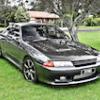Stresses on Engines?
Announcements
-
Similar Content
-
Latest Posts
-
Ok cool, because I do have some OEM BMW options for light(er) wheels. 17x8.5 M Sport wheels are 11kg and I could put 255's on them. Maybe that's an initial test.
-
So, in the effort of pulling apart airboxes and testing enclosures to see if this aids in MAP loss at WOT I noticed: 1) The ducts up the OEM intercooler holes from the front bar help IAT drastically, whether the pod is shielded from the engine bay by an airbox missing a lid, or an airbox WITH a lid. Plus you get more induction sound without the lid. Having half the airbox (with no lid) acting as a barrier to the headers seems to help. 2) For shits and giggles I checked the TB. This was full pedal travel. This is actually full travel of the TB. Photos aren't perfect, but there was definitely an amount of play in it and it wasn't against the stop. After much swearing and adjusting the pedal, I realised that the cable is actually too long for the skyline pedal travel to fully articulate it. Having the pedal adjusted so WOT was actually hard open on WOT resulted in an idle of 3500rpm. As an aside, this was also the TPS registering at 3.1%. I removed the above to give the pedal enough travel to actually fully open the TB. I now get a satisfying 'thonk' on full open and full closed which you can hear pumping the pedal as it hits the TB stops (with the bonnet open and intake back on). Luckily for me, the screw screws into a raised metal boss under this plastic piece that is now acting as the new throttle stop. I've gained about 20mm (ish) of pedal travel and I can move it maybe a mm or two post open-thonk before it's hard against the stop. After all of this I did a bit of road tuning because a 102MM throttle is sensitive. The difference between holding an 950rpm idle and instantly stalling is about 0.4% of TPS movement. Will that help? I suppose it can't hurt. I set 'closed' point back to where it was, I can definitely feel the extra pedal travel that is needed to actually open the TB fully. But this morning I dropped the car off at Paint Jail again, so who knows when this will re-eventuate out to see if it helps with the top of the dyno hitting a ceiling.
-
Take heart that everyone else seems to have found a way. The OEM S1 indicators do slot in pretty firmly. It may simply be a case of having them sit slightly looser and nobody actually ever noticed this when attempting to remove a indicator from a JSAI bar :p
-
If the original NA ECU has a separate TCU then you are going to need to reroute wires that used to run between the trans and the TCU to the appropriate (1 to 1 equivalent) pins on the ECU. Other than that, it should work. Look up posts by @Kinkstaah on the subject.







Recommended Posts
Create an account or sign in to comment
You need to be a member in order to leave a comment
Create an account
Sign up for a new account in our community. It's easy!
Register a new accountSign in
Already have an account? Sign in here.
Sign In Now